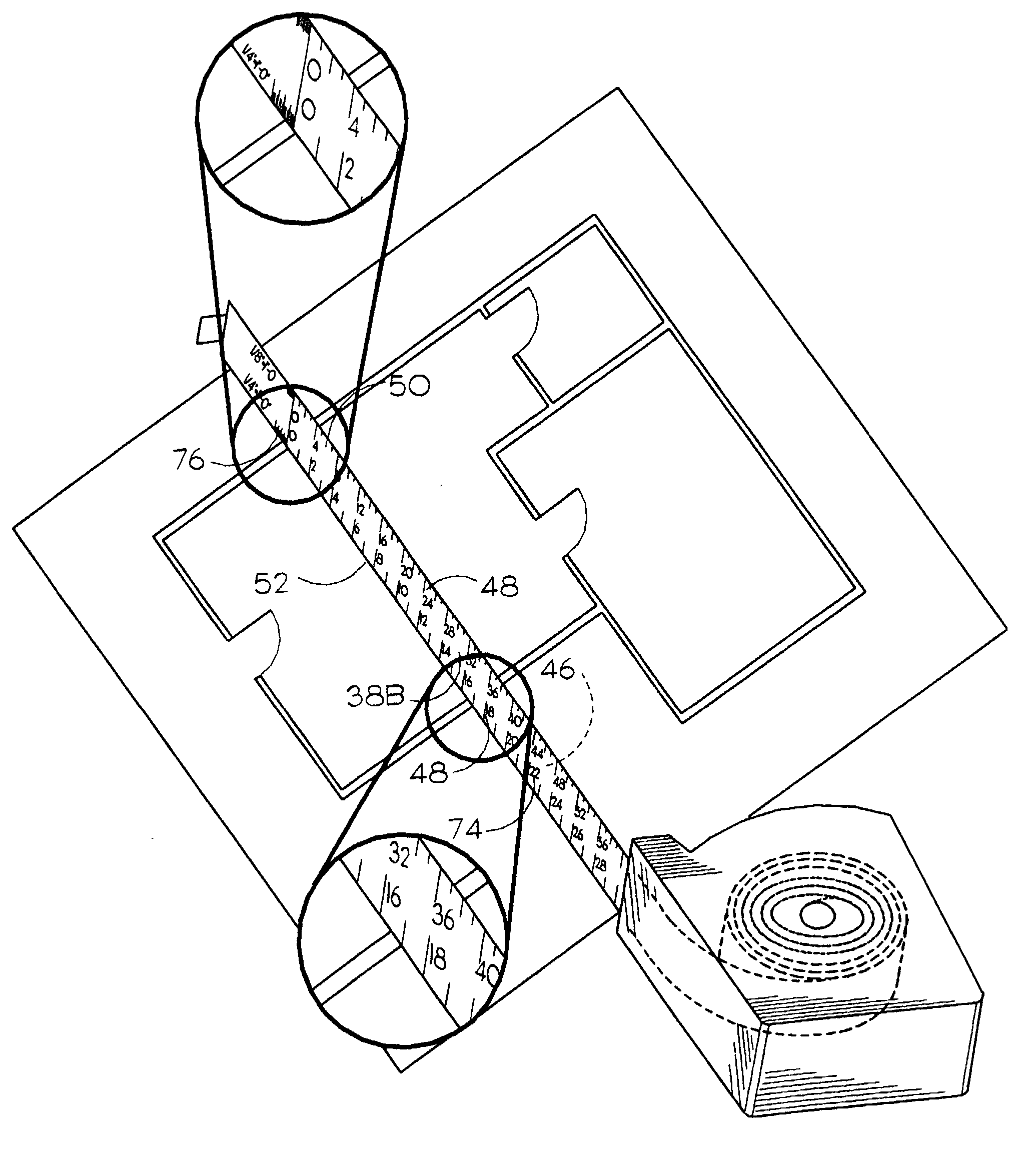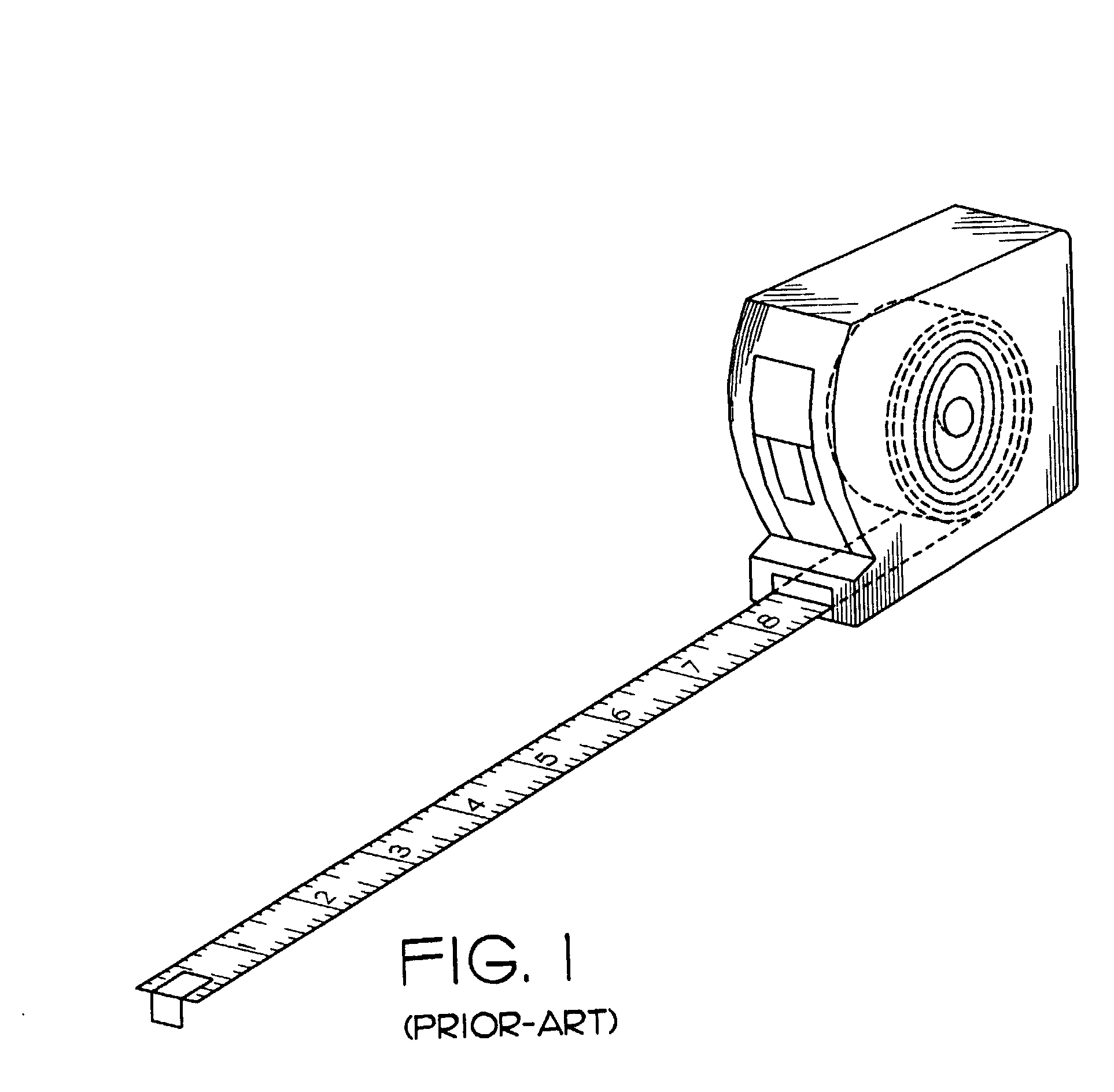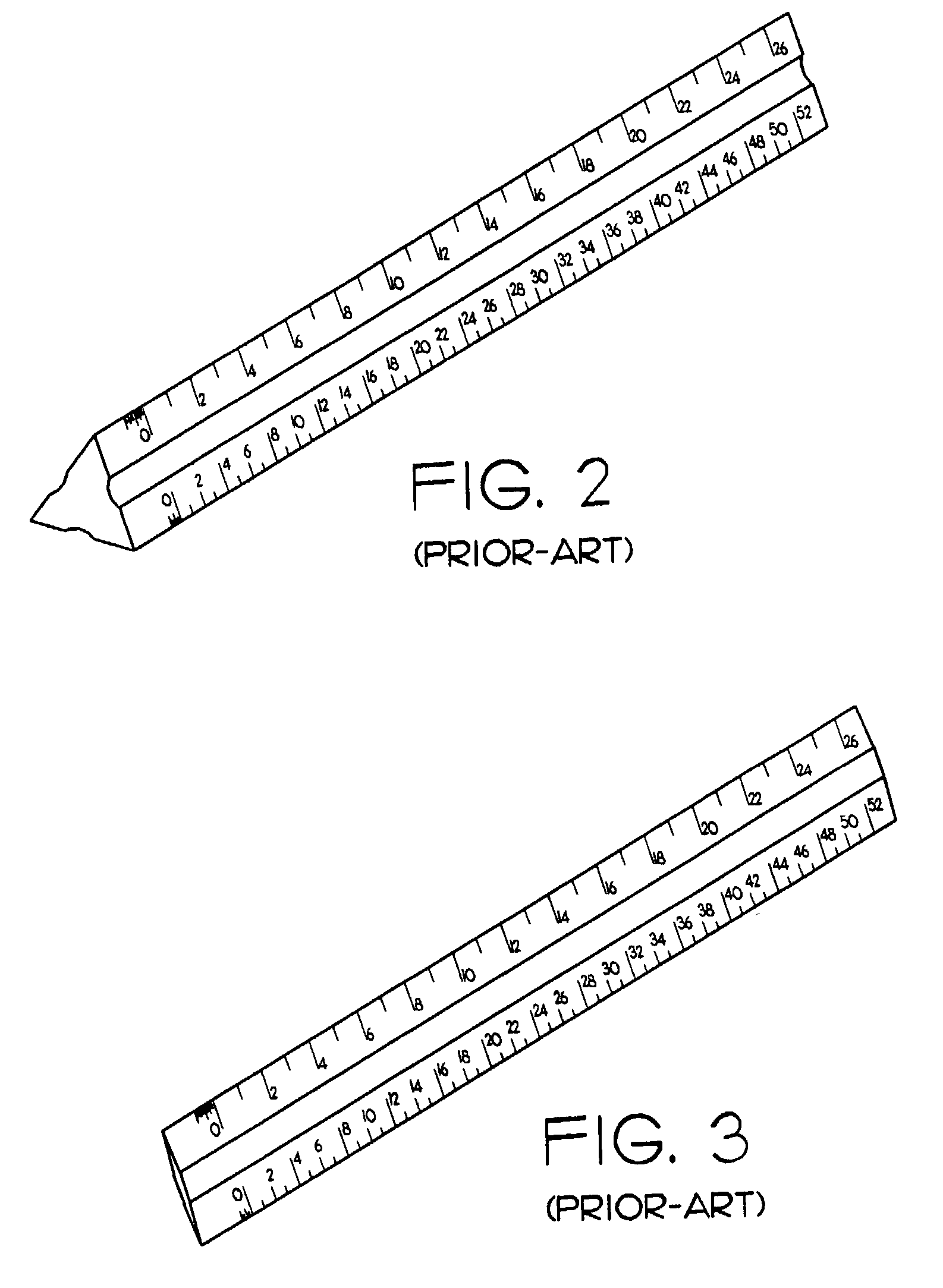Tape measure with true and reduced scales for contractor's convenience and accuracy
a tape measure and scale technology, applied in the field of tape measure, can solve the problems of inconvenient inconvenient use of instruments, and inability to accurately measure distances from scaled drawings, so as to reduce errors and delays in work, and facilitate carrying on the job site.
- Summary
- Abstract
- Description
- Claims
- Application Information
AI Technical Summary
Benefits of technology
Problems solved by technology
Method used
Image
Examples
Embodiment Construction
. 6 AND 7--PREFERRED EMBODIMENT
[0040] A preferred embodiment of the coilable, retractable tape measure is illustrated in FIG. 6 (perspective view of obverse) and FIG. 7 (perspective view of reverse). A measuring tape 20 comprises a housing 22 having opposed side walls 24 and 26, opposed front and back walls 28 and 30, and opposed top and bottom walls 32 and 34. The housing has a tape outlet 36 on front wall 28 out of which a flexible measuring blade 38 may be extended.
[0041] Measuring blade 38 comprises a flexible, coilable strip. A fixed end 40 of measuring blade 38 is fixed to and coiled into a roll around a tape hub 42 centrally located inside housing 22. A free end or reference end 44 of blade 38 extends through the tape outlet 36. Reference end 44 has a tab 46 fixed for temporarily and removably hooking reference end 44 to a reference point or object and preventing complete retraction of blade 38 into housing 22.
[0042] Obverse side 38A of measuring blade 38 illustrated in FIG. ...
PUM
 Login to View More
Login to View More Abstract
Description
Claims
Application Information
 Login to View More
Login to View More - R&D
- Intellectual Property
- Life Sciences
- Materials
- Tech Scout
- Unparalleled Data Quality
- Higher Quality Content
- 60% Fewer Hallucinations
Browse by: Latest US Patents, China's latest patents, Technical Efficacy Thesaurus, Application Domain, Technology Topic, Popular Technical Reports.
© 2025 PatSnap. All rights reserved.Legal|Privacy policy|Modern Slavery Act Transparency Statement|Sitemap|About US| Contact US: help@patsnap.com



